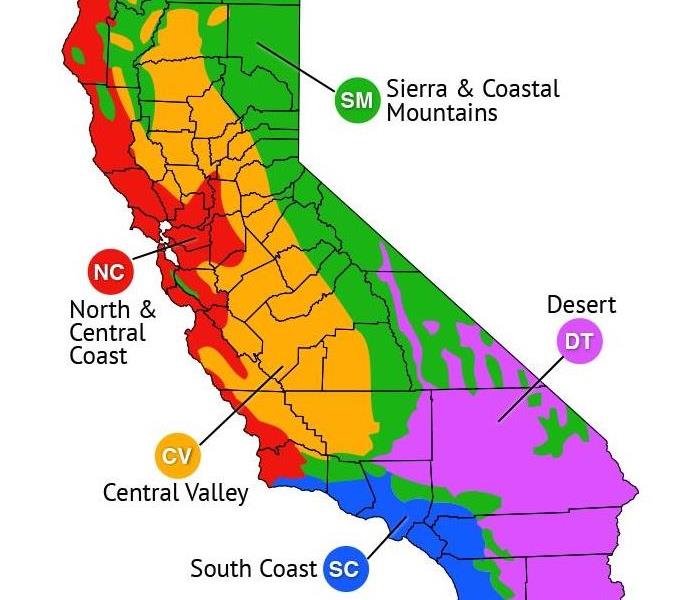California Storm Ready
8/7/2018 (Permalink)
California's historic drought remains severe, and residents must continue to conserve water. At the same time, we must also prepare for the possibility of large storms and coastal/bay flooding.
Storms in California sometimes cause flooding, mud flows, landslides, electrical outages and other impacts.
Using water wisely while taking steps to prepare for winter storms and coastal/bay flooding will help to protect our households, our communities and our state.
Failing to evacuate flooded areas, entering flood waters, or remaining after a flood has passed can result in injury or death. Flooding is a temporary overflow of water onto land that is normally dry. Floods are the most common natural disaster in the United States. Floods may:
Result from rain, snow, coastal storms, storm surges, and overflows of dams and other water systems.
Develop slowly or quickly – Flash floods can come with no warning.
Cause outages, disrupt transportation, damage buildings, and create landslides.
IF YOU ARE UNDER A FLOOD WARNING, FIND SAFE SHELTER RIGHT AWAY
Do not walk, swim, or drive through flood waters. Turn Around, Don’t Drown!
Just six inches of moving water can knock you down, and one foot of moving water can sweep your vehicle away.
Stay off of bridges over fast-moving water.
Determine how best to protect yourself based on the type of flooding.
Evacuate if told to do so.
Move to higher ground or a higher floor.
Stay where you are.
HOW TO STAY SAFE WHEN A FLOOD THREATENS
Prepare NOW
Know types of flood risk in your area. Visit FEMA’s Flood Map Service Center for information.
Sign up for your community’s warning system. The Emergency Alert System (EAS) and National Oceanic and Atmospheric Administration (NOAA) Weather Radio also provide emergency alerts.
If flash flooding is a risk in your location, then monitor potential signs, such as heavy rain.
Learn and practice evacuation routes, shelter plans, and flash flood response.
Gather supplies in case you have to leave immediately, or if services are cut off. Keep in mind each person’s specific needs, including medication. Don’t forget the needs of pets. Obtain extra batteries and charging devices for phones and other critical equipment.
Purchase or renew a flood insurance policy. It typically takes up to 30 days for a policy to go into effect and can protect the life you've built. Homeowner’s policies do not cover flooding. Get flood coverage under the National Flood Insurance Program (NFIP)
Keep important documents in a waterproof container. Create password-protected digital copies.
Protect your property. Move valuables to higher levels. Declutter drains and gutters. Install check valves. Consider a sump pump with a battery.
For more information visit: https://storms.ca.gov/






 24/7 Emergency Service
24/7 Emergency Service